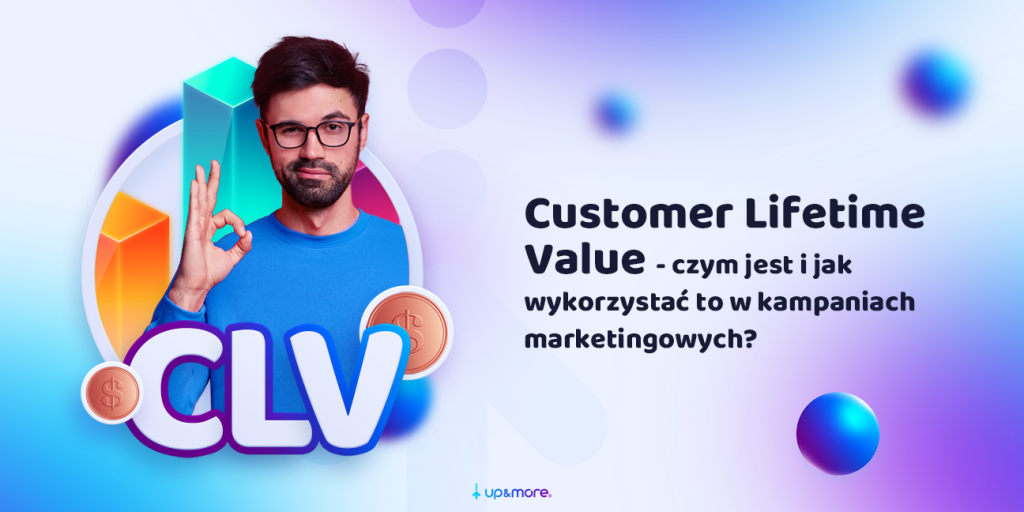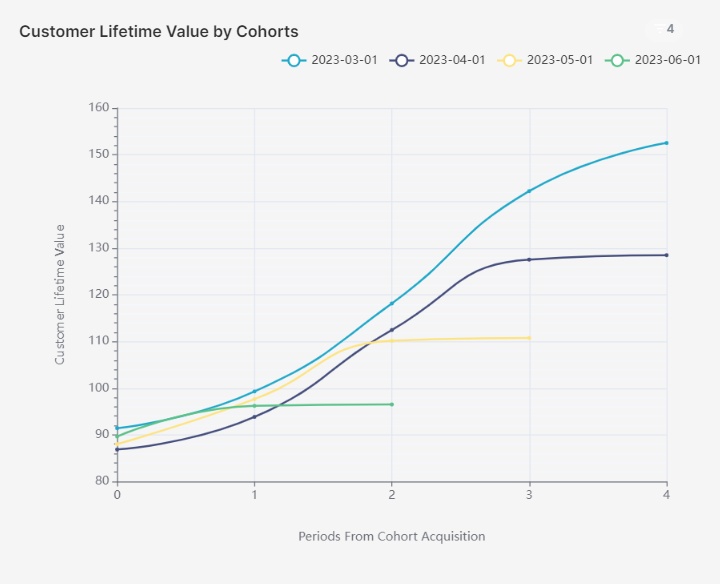Table of contents
In an era of increasing E-commerce and data, knowing and understanding your store’s customers is invaluable. But could you measure the lifetime value a customer brings to your business? This is the world of Customer Lifetime Value, or CLTV. It’s more than just a trendy buzzword in the e-commerce industry; it’s the secret key that unlocks untapped potential.

What is customer lifetime value / LTV? The golden ratio
CLTV tells you what total revenue you can expect from a customer over the lifetime of their relationship with your business. In the context of e-commerce, customers are a source of revenue, loyalty, and recommendations. By monitoring CLTV, you will know how much revenue you can expect from an acquired customer (after a month, two, or a year) and how much it is worth spending on acquiring them.
Why is CLTV so special?
- helps you invest wisely in customer acquisition and retention
- offers insights into your most valuable customers so you can tailor your services to them
- controls long-term business strategy
- enables you to track the characteristics of your best customers
How to calculate LTV / CLTV?
Calculating CLTV may seem as intricate as finding your way through a maze. However, it is actually a simpler process than you might think. The basis is to understand how each customer affects your business for a specific period of time, which you can choose according to your needs. Before we can move on to formulas and the calculation of CLTV itself, it is necessary to understand the three components of CLTV, which are:
- Customer (Customer): determining who your customer is is key. A good starting point can be the customer’s email address.
- Lifetime (Lifetime): is the period for which we want to calculate the value of the customer. You can use a time frame such as 30, 60, or 90 days or 3, 6, or even 12 months. You should decide on such a wide lifespan depending on the nature of the product or service you offer.
- Value (Value): Rather than simply adding up the revenue generated by a given customer, you should use profit, which is the net revenue minus all costs directly related to the order.
Just as the decision of who you want to treat as a customer and whether you prefer to analyze the generated value based on revenue or profit is 100% up to you, in the case of customer lifetime it is worth relying on data. That is, check the frequency and average number of customer orders and churn.
Calculate CLTV step-by-step
1. Identify the cohort
Select the specific group of customers you want to analyze, for example, all customers acquired in January 2023.
2. Add up the revenue
Add together all the revenue generated by this cohort of customers. This includes all purchases they have made since the acquisition. * Optionally limit the customer lifetime to an appropriate length, such as 3 months.
3. Count the number of customers in a cohort
Identify the number of unique customers in that cohort. By this number, you will divide the revenue total to calculate the CLTV.
There are several unique customers in the cohort
4. Divide the total revenue by the number of customers
Divide the total revenue by the number of customers acquired in the cohort.
CLTV= Total value of orders placed up to 3 months after customer acquisition / Number of customers acquired in a cohort
5. Interpret the result
The result obtained is the average value that each customer from this cohort brought to your business in the fixed 3 months of his “life” as a customer. You can compare it with other cohorts to understand which groups of customers are most valuable. Remember, however, to compare only the CLTVs of cohorts that have had equal time to place subsequent orders from acquisition-i.e., in this case, a minimum of 3 months. This is another thing that affects the choice of customer lifetime If we want to compare cohorts relatively early on, it is best to choose a period of no more than 2 months.
Analyzing the customer lifetime value index (CLTV) over the long term is mainly for assessing customer value in the context of long-term strategies and revenue forecasting rather than for comparing different customer cohorts against each other.
In-depth analysis (optional)
To get a more complex picture of customer value, you can further explore this data, considering factors such as customer acquisition cost (CAC), gross margin, churn rate, etc..

Land of CLTV. LTV application in e-commerce
Understanding CLTV is undoubtedly a strong competitive advantage that can positively impact the development of specific areas of your business. Some of the main applications of CLTV in e-commerce include:
- Personalized digital marketing: Use CLTV to create personalized offers for your most valuable customers.
- Product development: CLTV analysis can inform the needs and preferences of specific customer groups, creating new product lines tailored to them. If CLTV analysis reveals that the most valuable customers are interested in organic products, the company may decide to develop a line of organic products, which in turn will increase the loyalty of these customers and potentially attract a new group of buyers.
- Strengthen customer service: Create loyalty programs or special support channels for customers with higher CLTV.
- Optimize advertising budgets: Understanding which customer segments have the highest CLTV can help you target advertising budgets appropriately to increase return on investment.
- Predicting revenue: CLTV can be used to forecast future revenues and identify stable revenue streams and potential growth areas.
- Optimizing sales processes: CLTV analysis can improve sales processes, enabling identification and focus on those channels that generate the highest value for customers.
- Understand and reduce customer churn: By analyzing the differences in CLTV between different groups, you can understand what leads to customer churn and develop a strategy to minimize it.
- Application to competitive analysis: By comparing the CLTV of customers from different markets or competitors, you can better understand your company’s position in the market and identify potential threats and opportunities.
Traps when analyzing LTV. What to watch out for?
When calculating CLTV we need to watch out for several pitfalls:
- Undue emphasis on high-value customers: Don’t forget those who spend less; they can become loyal customers.
- Misinterpretation of data: Ensure you collect accurate data to avoid misleading CLTV results.
- Ignoring Customer Acquisition Costs (CAC): Failing to consider these costs can lead to an overly optimistic assessment of customer value. According to accepted rules, CLTV should be at least twice as high as CAC.
- Inadequate definition of lifetime: Choosing too short or too long a period for analysis can lead to an inadequate understanding of customer value and problems in comparing cohorts among themselves.
- Not considering churn rate (Customer churn rate): If you don’t consider how often customers leave your business, you can distort CLTV calculations.
- Missing the impact of promotional offers and discounts: These marketing activities can significantly affect customer value, and missing them in your analysis can lead to erroneous conclusions.
Use CLTV to grow e-commerce
In the booming e-commerce sector, the Customer Lifetime Value Indicator (CLTV) is a key business analysis component. It is a numerical indicator and a management philosophy that emphasizes customer focus in corporate strategy.
By effectively using CLTV analysis, an enterprise can further develop and optimize its online business. Whether you are a newcomer to e-commerce or an experienced operator in this market, using CLTV analysis can revolutionize your business strategy by providing valuable information you may have overlooked until now.
Using CLTV analysis can help you further optimize your business strategy by providing valuable information you may have overlooked until now.
This article was written in collaboration with Sublime. The Sublime Analytics platform supports sales and marketing growth strategies for DTC and e-commerce companies.
Was the article helpful?
Rate our article, it means a lot to us!
Let's talk!
CEO and managing partner at Up&More. He is responsible for the development of the agency and coordinates the work of the SEM/SEO and paid social departments. He oversees the introduction of new products and advertising tools in the company and the automation of processes.